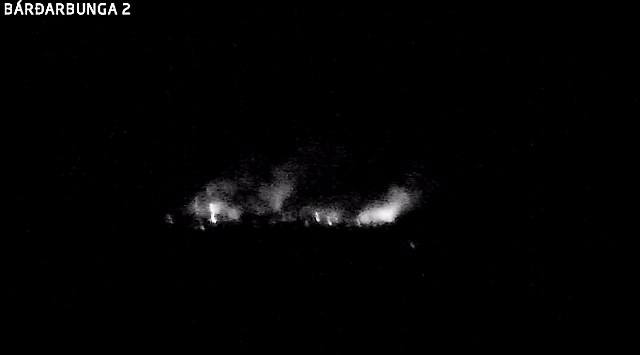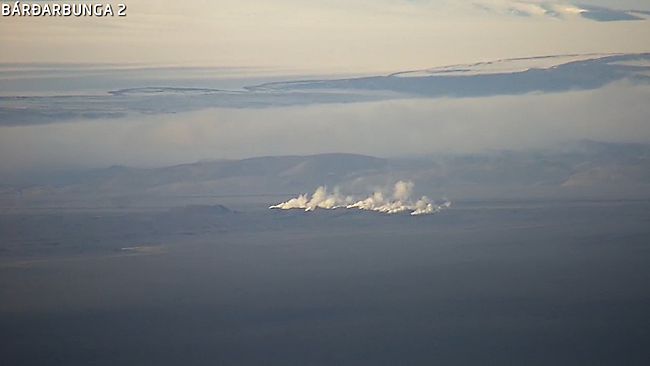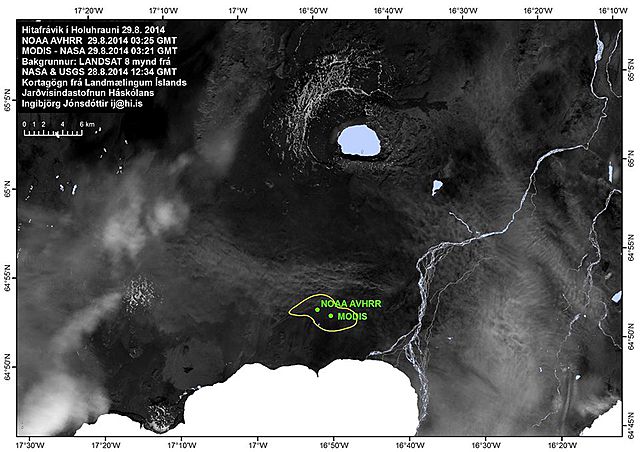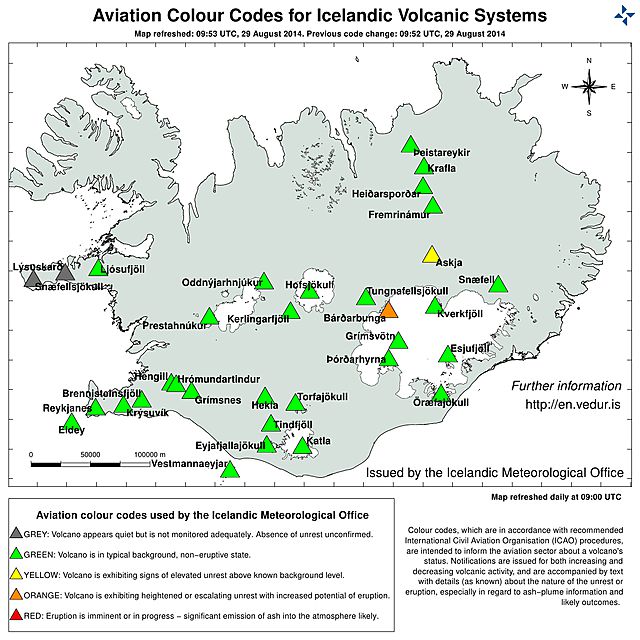
The eruption started in Holuhraun, north of the Dyngjujökull Glacier, which is located in northern Vatnajökull, just after midnight Friday, local time, the Icelandic Meteorological Office said.
Scientists who are in the area close to the eruption estimate that the volcanic fissure in Holuhraun is about 1 km (0.62 miles) long, according to the Iceland Civil Protection Department.
Four likely scenarios exist for future seismic and volcanic activity in the area, government officials said.
They include the migration of magma stopping, which would result in a gradual reduction in seismic activity and no further eruptions; a dike could reach the Earth's surface north of Dyngjujökull causing another eruption, possibly on a new fissure; or an eruption occurs again where either the fissure is partly or entirely beneath Dyngjujökull and likely produce a flood in Jökulsá á Fjöllum and perhaps explosive, ash-producing activity, according to the Met Office website.
The fourth scenario is for Bardarbunga to erupt, causing an outburst flood and possibly an explosive, ash-producing activity.
No volcanic ash had been detected with the radar system in the area, they stated. A few hours after the eruption, reports list the airborne ash particles are minimal.
A Code Red aviation travel warning with a no-fly zone was issued Friday by the Met Office. The office said a significant emission of ash into the atmosphere was likely. All Icelandic airports are no longer under restrictions and the height of the zone now only reaches 5,000 feet.
People are not believed to be in danger because of the eruption #BardarbungaIf a larger eruption follows in the coming days, it may seriously impact international travel, AccuWeather.com Meteorologist Alan Reppert said.
- mbl.is (@mblfrettir) Aug. 29, 2014
"With the remains of Cristobal pushing over Iceland late in the weekend and early next week, there is a chance the winds above the volcano could push ash and debris south over the central and even western Atlantic," Reppert said. "Depending on how the storm dissolves, this may bring an even stronger push of winds southward into the Atlantic over the end of the week."
The no-fly zone over Iceland reaches Akureyri airport #Bardarbunga pic.twitter.com/s1to2QWULnIce crevasses formed Wednesday in advance of Friday's eruption, officials from the Met Office, the Institute of Earth Sciences and Civil Protection, said. The crevasses or cauldrons were likely formed due to melting at the ice bottom.
- mbl.is (@mblfrettir) Aug. 29, 2014
The largest of 700 earthquakes recorded between midnight and 11:45 am, local time, a magnitude-5.4 earthquake was reported at 7:03 a.m. Saturday in the Bardarbunga area, the Icelandic Meteorological Association reported.
In 2010, the Eyjafjallajokull eruption in Iceland spewed ash into European Airspace, leading to thousands of flight cancellations which impacted millions.
Airlines lost almost $2 billion due to the canceled flights, according to Bloomberg News.






Reader Comments
to our Newsletter